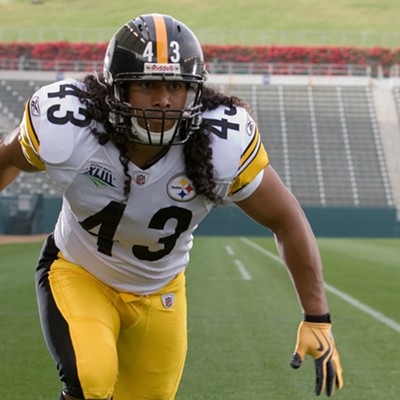On April 6, runners of the Pittsburgh Marathon received a surprising newsflash: The course was going to change. The mass e-mail, marked "Important Race Updates," succinctly summarized the situation: "To accommodate a record field of marathon runners poised to run the City of Bridges," it read, "we have made minor changes to the course."
Viewed on an updated map, the changes do look minor: Runners start Downtown, proceed through the Strip District to the edge of Lawrenceville, then run back to the Strip District and cross the 16th Street Bridge. Before, they would have run back into Downtown for a few blocks and crossed closer to the stadiums. In short, runners now run more North Side, less Downtown. No biggie.
But from an organizing standpoint, a slight detour like this is a massive undertaking. It requires hundreds of hours of discussion, debate, revision and re-measuring of the route by USA Track & Field (USTAF), whose certification is required before a route is made official. And even momentary confusion about a course change can have dramatic results. The tale of John Tuttle is perhaps the best example: In 1989, Tuttle, a native of Atlanta, took a slightly wrong turn not far from the Point State Park finish line. He corrected himself almost immediately, but lost the race to Ken Martin by five seconds.
The marathon -- known formally as the Dick's Sporting Goods Pittsburgh Marathon -- is finding its way back from a detour as well. For the past six years, the marathon hasn't taken place at all, and this year's 26.2-mile odyssey faces some special hurdles. The Pirates are slated for a home game, and the staff of Children's Hospital has scheduled its final exodus to their new facilities in Bloomfield -- all in the same weekend as the Marathon. The usual marathon route is also disrupted by a minefield of traffic cones.
"Because of the various construction projects, we had to have a number of turns," says Karen Fredette, spokeswoman for the Pittsburgh Marathon. And each modification meddled with police positioning, stanchion arrangement and traffic diversion. By mid-March, these turns looked increasingly hazardous. "It just seemed to be in everyone's best interest to simplify the route," Fredette says.
Even so, the race has attracted no fewer than 10,500 runners -- nearly twice as many as any previous Pittsburgh Marathon. Newcomers can no longer sign up, and a waiting list is already flooded with names.
"We still could have gone higher" in terms of number of runners, Fredette says, "but to assure the quality of the event and the safety of the runners, we decided on a cap. We've never had a cap in the past. The 6,000-range is where the past marathons have maxed out."
"I think 10,000 is a good number," says Mike Scott, a 24-year-old auditor for PricewaterhouseCoopers who has run in seven previous marathons. "I have done very small marathons -- Toledo, with maybe 500 participants -- and large marathons -- Chicago with 40,000. It's small enough that you are sure to have adequate attention at the water stops and the route is not too crowded, but large enough that there will be spectators over most of the course. They are the people that get you through to the finish.
"The change in the route doesn't have much effect on me personally," Scott adds. "If there would have been a significant change in the elevation, that might have been a problem."
In fact, given Pittsburgh's dramatic terrain, the route is impressively level. After its crisscross through the North Side, this year's course traverses the West End Bridge, spans South Side to the Birmingham Bridge, continues up Fifth Avenue to Point Breeze, boomerangs through Homewood and Highland Park, bisects East Liberty, dips back into the Strip and finishes only a couple blocks from the starting line.
Even so, runners will have plenty of moral support. They'll be cheered by the students of 24 different Pittsburgh public schools; water and aid stations are scattered along the course; EMTs are ready and waiting for collapsing racers; and 30 bands are booked to perform throughout the day. According to organizers, the Strip will be nicknamed the "Athlete's Village."
Runners may also take some consolation in knowing that determining the route wasn't easy, either. Marathons have adhered to a strict code since Pheidippides sprinted from Marathon to Athens in 490 B.C. (and promptly died). A marathon must be precisely 26.2 miles, and the distance cannot be estimated. An official USTAF measurer calculates the route to the foot.
"There's a lot of long nights in there," says Fredette. "Literally. Lots of people driving around in the dark, in the rain."














